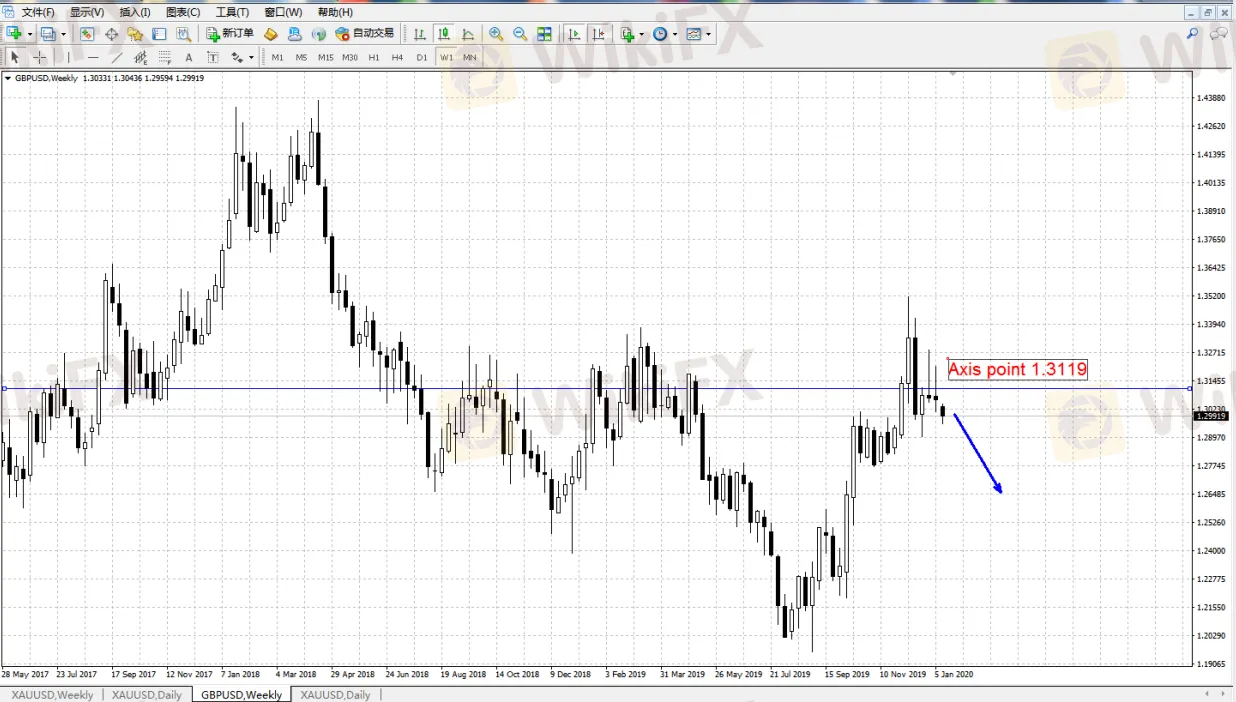简体中文
繁體中文
English
Pусский
日本語
ภาษาไทย
Tiếng Việt
Bahasa Indonesia
Español
हिन्दी
Filippiiniläinen
Français
Deutsch
Português
Türkçe
한국어
العربية
What Do the Economic Indicators Say About GBP
Abstract:British general election at the end of 2019 was conducted against a sluggish economy. Latest statistics show that Britain’s economy growth is stagnant and the once strong labor market has weakened. In the first half of 2020, the pound will need to navigate through the domestic economy, central bank policies and the crucial March budget. In addition, the Brexit negotiation is still in its preliminary stage, whether a free trade agreement can be successfully concluded will also be critical.
British general election at the end of 2019 was conducted against a sluggish economy. Latest statistics show that Britains economy growth is stagnant and the once strong labor market has weakened. In the first half of 2020, the pound will need to navigate through the domestic economy, central bank policies and the crucial March budget. In addition, the Brexit negotiation is still in its preliminary stage, whether a free trade agreement can be successfully concluded will also be critical.
After officially leaving the European Union on January 31st, Britain still faces more negotiation with the EU on the following transitional period,which means the pound‘s market trend will continue to fluctuate like last year. Investors should pay attention to PM Boris Johnson’s negotiations with the European Union, for if their meeting can‘t make substantial progress, it won’t be a good news for the pound.
Mark Joseph Carney whose term as Bank of England‘s chairman ends this March said that from the perspective of risk management, there’s a good reason for interest rate cut if the sluggish economic trend last year continues in 2020.Member of the BoE Monetary Policy Committee mentioned that if economy growth doesn‘t improve in the upcoming months, they will consider supporting interest rate cut. This further shows the British central bank is leaning towards implementation of more economic stimulus, so from medium to long term perspective, investors should be prudent about the pound’s future trend. The pounds axis point for the first half of 2020 is at 1.3119, and the pound will go weak if it falls below this level.

Disclaimer:
The views in this article only represent the author's personal views, and do not constitute investment advice on this platform. This platform does not guarantee the accuracy, completeness and timeliness of the information in the article, and will not be liable for any loss caused by the use of or reliance on the information in the article.
Read more

What Will EU Lose After Brexit?
Britain has officially left the European Union on January 31st , 2020, and will soon start negotiations with the European Union regarding bilateral relations in the future. It is believed that Brexit will cause negative impacts on the European Union in multiple aspects.

AUD’s Trend Is Affected by Macro Economy
Latest statistics show Australia’s annualized CPI from Q4, 2019 to be 1.8%, lower than the central bank’s 2%-3% long term target range, which the inflation fails to reach ever since 2017.

CAD Will Have Less Upward Momentum in the New Year
As the G10 currency that performed the best in 2019, Canadian dollar may see a rather smooth horizontal trend this year partly because weakening domestic economy, and partly because the positive influence of easing trade tensions has been fading. CAD rose 5% against the USD in 2019, with nearly half of the increase gained in the last few weeks, benefiting as several other currencies from a reduce of risk factors at the end of 2019.

Aussie Faces Weak Demands Both Home and Abroad
Australian economy appeared sluggish in 2019. Stagnant wage growth and debts piling up have made consumers significantly reduced their spending, and though Reserve Bank of Australia had lowered the interest rate by 0.75% through 3 rate-slashes, private consumption remained low.
WikiFX Broker
Latest News
AIMS Broker Review
The Hidden Checklist: Five Unconventional Steps to Vet Your Broker
YAMARKETS' Jingle Bells Christmas Offer!
Why is there so much exposure against PrimeX Capital?
Russia to Fully Ban Crypto Mining in 10 Regions Starting January 1, 2025
MTrading’s 2025 "Welcome Bonus" is Here
Doo Financial Obtains Licenses in BVI and Cayman Islands
CFI’s New Initiative Aims to Promote Transparency in Trading
Currency Calculator



